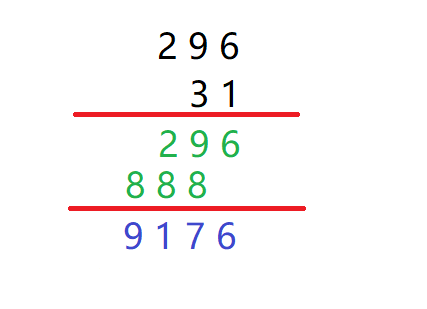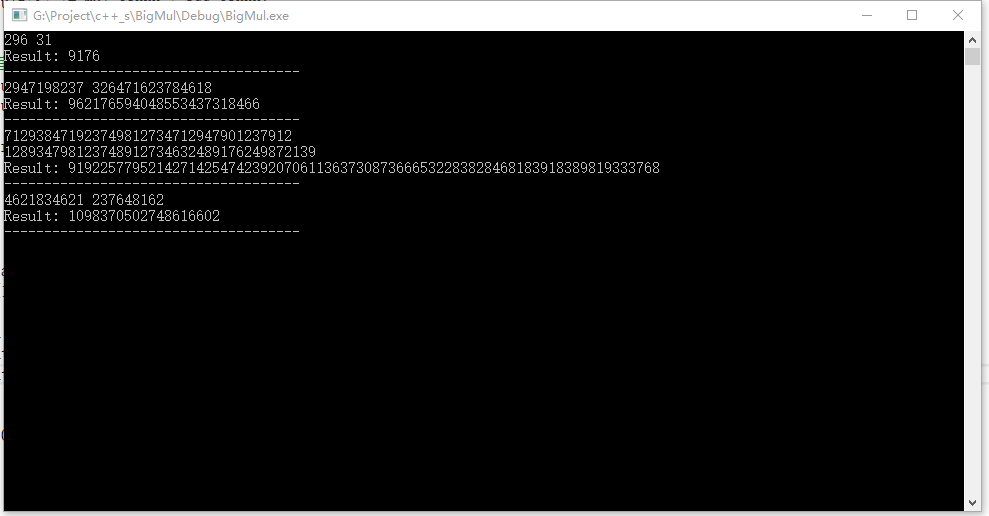大整数乘法运算
乘法的计算比加法要麻烦,主要有两个思路:
- 模拟手算
- 先不管所有进位计算,最后统一处理进位
乘法手算的步骤:

还是用string来表示数字,乘积的位数最大为两个相乘数的位数和,所以开始就可给定结果的位数。为了节省内存,我们用了一个小技巧:用result来表示每次相乘的和,这样就不需额外声明保存每位乘积的变量了。
具体代码:
std::string Mul(std::string a, std::string b)
{
std::string result(a.length() + b.length(), '0'); //两个数相乘,结果的位数不会超过它们的位数之和。
for (int i = b.length() - 1; i >= 0; --i)
{
int mul_carry = 0, add_carry = 0; //记录乘法时的进位,加法时的进位
for (int j = a.length() - 1; j >= 0; --j)
{
int temp = (b[i] - '0') * (a[j] - '0') + mul_carry; //每位相乘的值
mul_carry = temp / 10; //记录进位
temp %= 10; //进位后的值
int temp2 = result[i + j + 1] - '0' + temp + add_carry;
result[i + j + 1] = temp2 % 10 + 48; //设置相应位上的值和原本位上值相加后的值。
add_carry = temp2 / 10; //记录进位
}
result[i] += mul_carry + add_carry;
}
//如果首位是0,则从第二位开始输出
if (result[0] == '0')
result = result.substr(1, result.length());
return result;
}
现在来看看它的威力:




